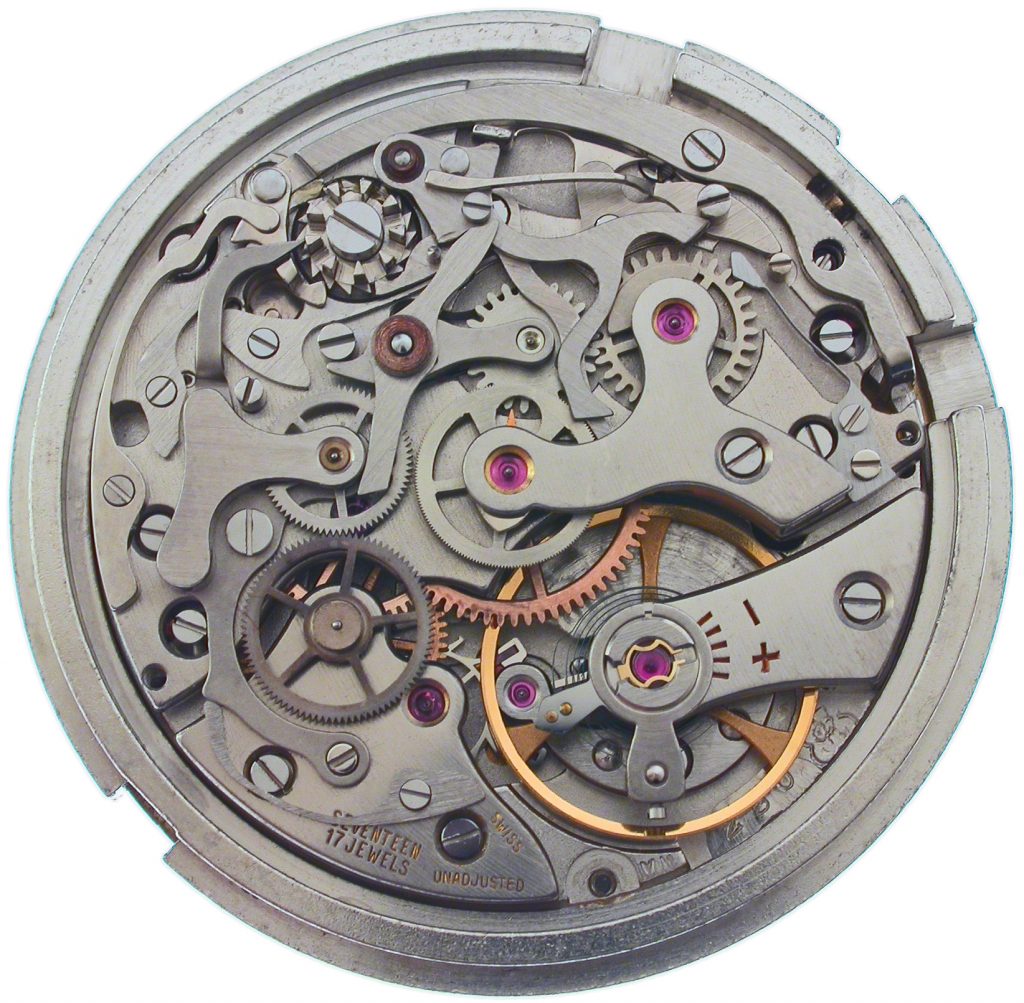
One of the more popular movements in the history of horology, the high-end Valjoux 23/72 chronograph family is vast and confusing. It was in production for many decades (1916 through 1974, by reckoning) and there are over two dozen different related movements. I’ve been working to get my head around these for years, and this site has given me a platform for that work!
The family began with the simple Cal. “A23”, originally a monopusher developed for the nascent wristwatch market by brothers John and Charles Reymond in the village of Les Bioux in the Vallée de Joux. This would become one of the most famous and celebrated watch movements of all time, and remains in use a century later, though production has long since ceased. And that little Swiss valley would give its name to the company (“Valjoux”) and become one of the key locations in Swiss watchmaking. It’s now home to Jaeger-LeCoultre, Audemars Piguet, Vacheron Constantin, Blancpain, Breguet, and more.
One of the more confusing aspects of this movement family is the naming: The first two digits denote the basic calibre while an additional digit or letter is used to show the variations on this base. Then there are the “nicknames” applied by Valjoux to indicate functions: Cal. 88 “VZHCL” adds a moon phase display (“Lune”) to Cal. 72c “VZHC”.
Most Valjoux movements in the classic period were chronographs, and the Valjoux 23/72 movement family was dominated by movements measuring 13 ligne (29.50 mm) in diameter. But this family also includes a few unusual cousins:
- The compact 10.5 ligne (23.35 mm) calibres: 69 DX and 89 DX
- The non-chronograph calibres: 78 VZSC, 89 DX, and 90 VZSCL
Valjoux 23/72 Family Movements
The Valjoux Cal. 23/72 family was primarily made up of eight movements, with all others being variations on these. Many components are shared between most or all of these movements, with the main variations happening together over the long production of the series.
- Cal. 23 VZ – Basic movement with no hour counter
- Cal. 72 VZH – Basic movement with hour counter
- Cal. 72c VZHC – Cal. 72 with triple calendar
- Cal. 88 VZHCL – Cal. 72c with moon phase
- Cal. 78 VZSC – Non-chronograph triple calendar
- Cal. 90 VZSCL – Cal. 78 with moon phase
- Cal. 69 DX – Compact 10.5 ligne chronograph
- Cal. 89 DXC – Compact 10.5 ligne triple calendar
| Complications | 18,000 A/h No Chrono | 18,000 A/h No Hours | 18,000 A/h Hour Counter | 21,600 A/h No Hours | 21,600 A/h Hour Counter |
|---|---|---|---|---|---|
| Base | 23 VZ 69 DX | 72 VZH 722 | 236 | 726 727 | |
| Flyback | 230 | 720 | 235 | 725 | |
| Date | 232 | 234 | |||
| Triple Date | 78 VZSC | 23C | 72c VZHC 723 | 730 | |
| Flyback and Date | 237 | ||||
| 24 Hour Hand | 724 | 729 | |||
| Calendar and Moon Phase | 89 DXC 90 VZSCL | 88 VZHCL | 886 | ||
| Tide Calculator | 721 |
Valjoux 23/72 Research Notes
Given the long history of this movement series, there is a lot of information out there. However, because these movements are no longer produced, much of this information is fragmented and outdated. And the movements changed over time, making it hard to determine exact specifications and so on.
I was lucky enough to find a trove of original Valjoux watchmaker documentation from the 1960s that really clarified the specs of the major movements in the series. But the later additions, particularly the 21,600 A/h models, are much more poorly-documented. Indeed, it’s hard to even put a precise date of production on these! It’s hard to imagine now, but these movements were considered quite out-of-date in the 1970s and weren’t widely used. Although there were many versions produced, they are fare more rare than their predecessors.
It’s also challenging to document such old movements because the original documents never made it to the web. Archive.org doesn’t go back to the 1940s!
One incredibly useful resource is a June 2004 article in WatchTime magazine. I urge you to check it out! But there are errors in there, too. I also relied on the wonderful Ranfft Pink Pages, as I always do when it comes to classic movements, and the afore-mentioned trove of original documents.
Work continues!